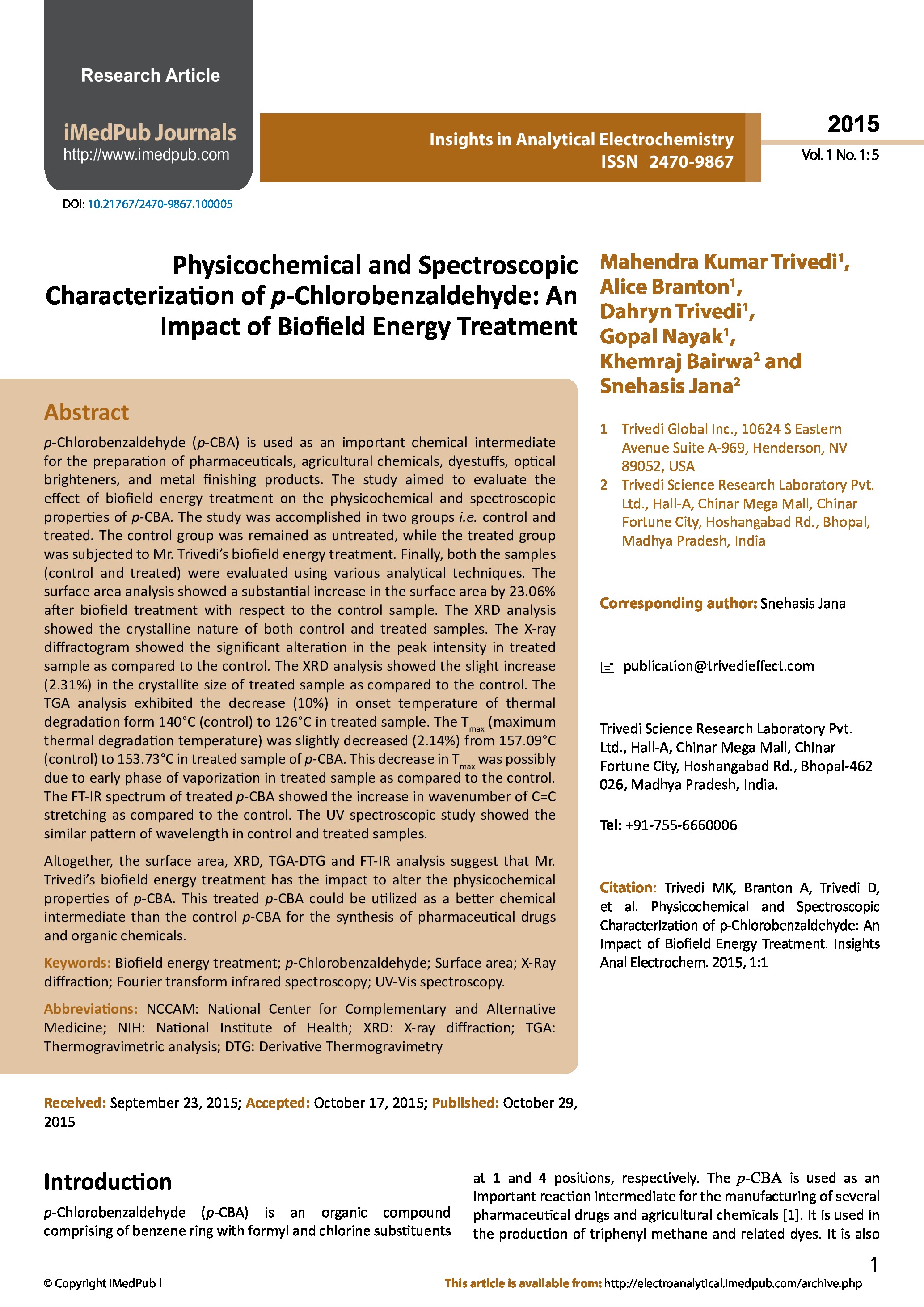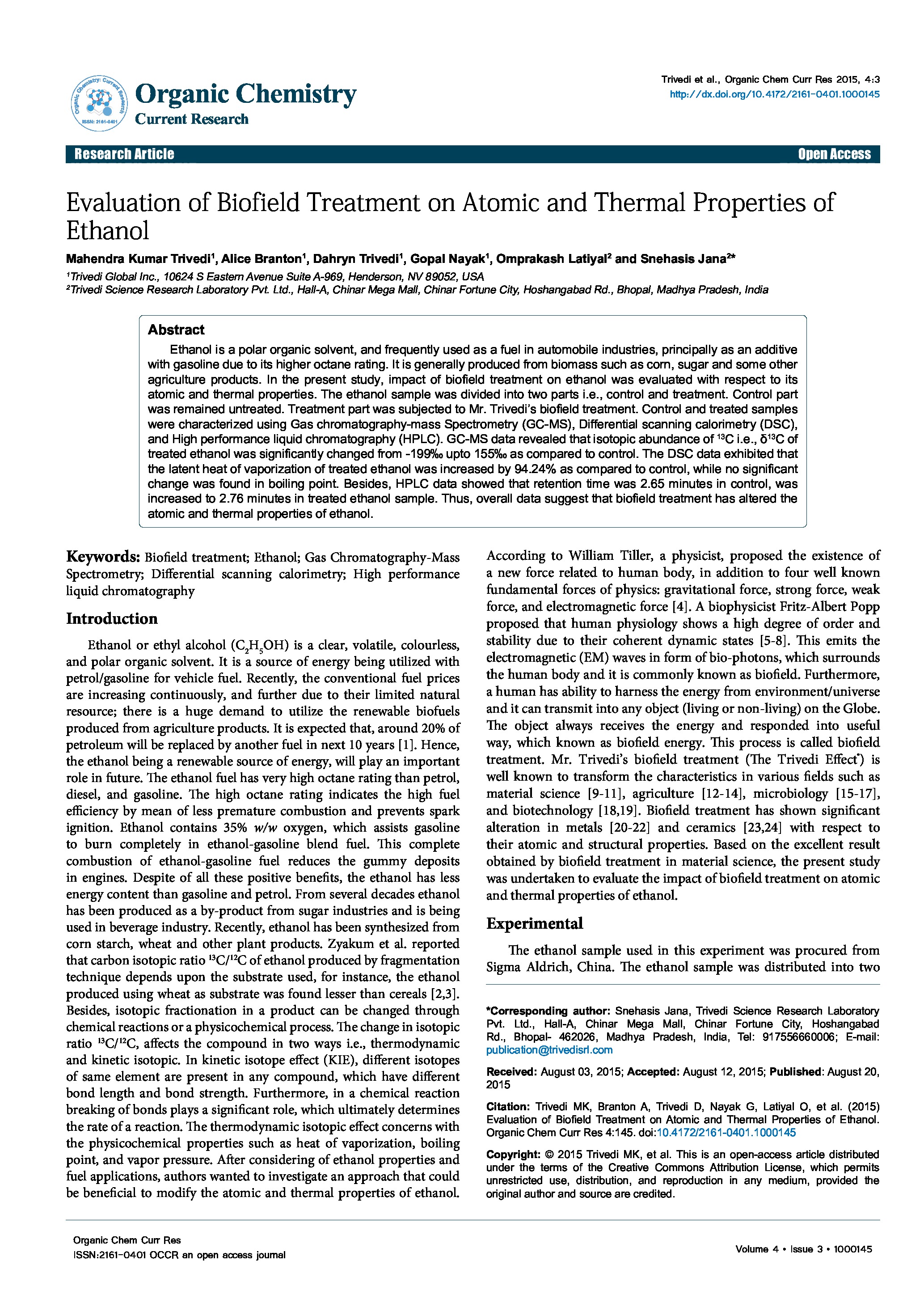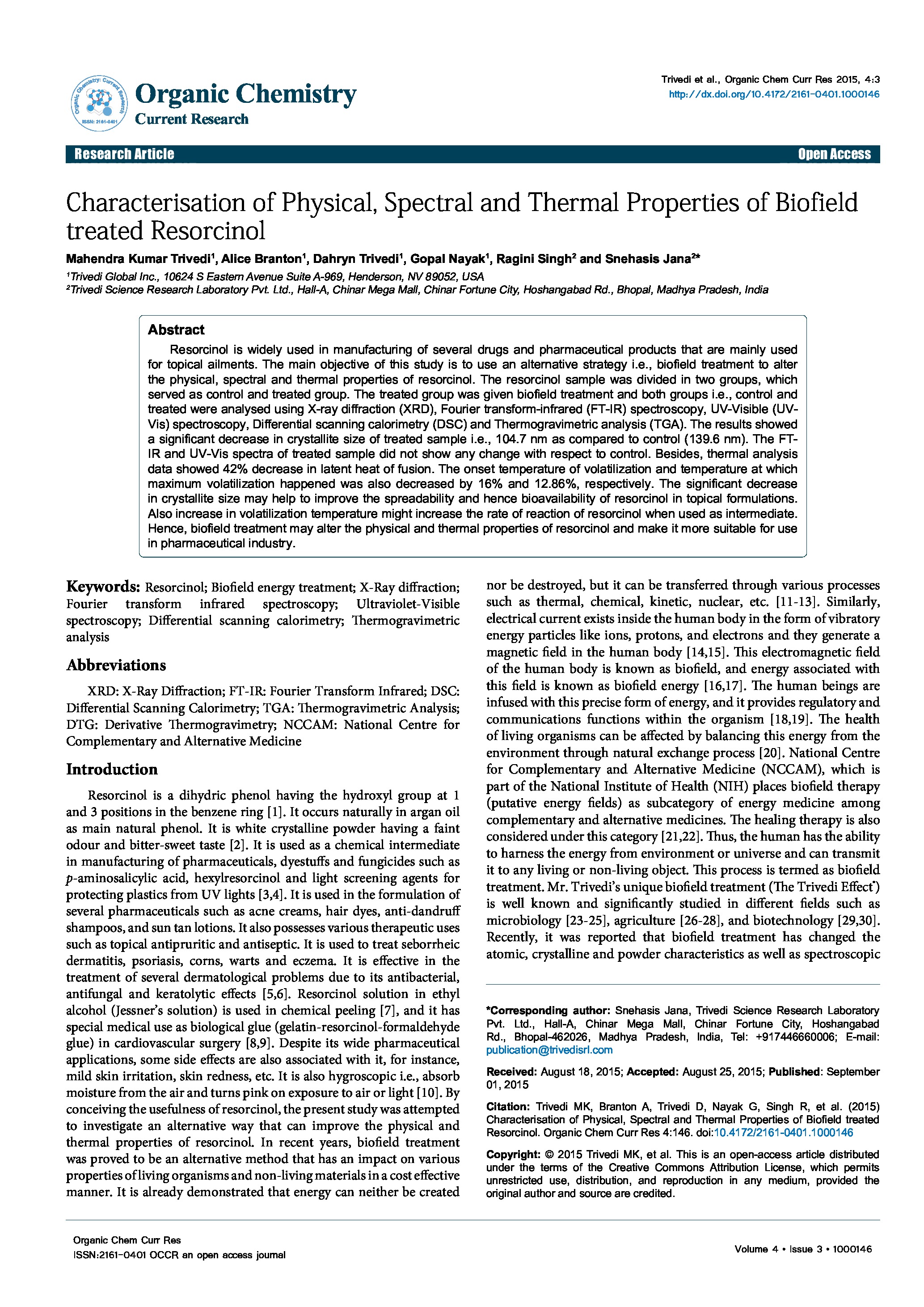Date of upload:
25.11.2016
Co-author:
Mahendra Kumar Trivedi, Alice Branton, Dahryn Trivedi, Ragini Singh, Snehasis Jana
Abstract:
The chloronitrobenzenes are widely used as the intermediates in the production of pharmaceuticals, pesticides and rubber processing chemicals. However, due to their wide applications, they are frequently released into the environment thereby creating hazards. The objective of the study was to use an alternative strategy i.e. biofield energy treatment and analysed its impact on the physical, thermal and spectral properties of 3-chloronitrobenzene (3-CNB). For the study, the 3-CNB sample was taken and divided into two groups, named as control and treated. The analytical techniques used were X-ray diffraction (XRD), thermogravimetric analysis (TGA), differential scanning calorimetry (DSC), UV-Visible (UV-Vis), and Fourier transform infrared (FT-IR) spectroscopy. The treated group was subjected to the biofield energy treatment and analysed using these techniques against the control sample. The XRD data showed an alteration in relative intensity of the peak along with 30% decrease in the crystallite size of the treated sample as compared to the control. The TGA studies revealed the decrease in onset temperature of degradation from 140ºC (control) to 120°C, while maximum thermal degradation temperature was changed from 157.61ºC (control) to 150.37ºC in the treated sample as compared to the control. Moreover, the DSC studies revealed the decrease in the melting temperature from 51°C (control) →47°C in the treated sample. Besides, the UV-Vis and FT-IR spectra of the treated sample did not show any significant alteration in terms of wavelength and frequencies of the peaks, respectively from the control sample. The overall study results showed the impact of biofield energy treatment on the physical and thermal properties of 3-CNB that can further affect its use as a chemical intermediate and its fate in the environment.




